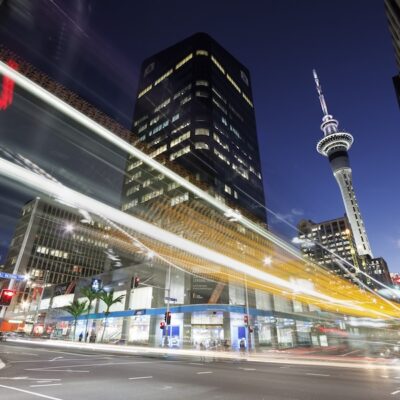Time to take stock as tourism trends upwards
With New Zealand tourism on the upswing, the industry is in a good position to take stock of its future direction, says Lincoln University Professor David Simmons.
897
With New Zealand tourism on the upswing, the industry is in a good position to take stock of its future direction, says Lincoln University Professor David Simmons.
According to the just-released State of the Tourism Industry 2015 report, the industry is enjoying very strong growth, although seasonality, changes in visitor markets and skill shortages remain some of the biggest challenges.
The report summarises the current state and performance of the industry and includes results from a survey of several hundred New Zealand tourism businesses.
The 2015 publication is the fifth in an annual series produced by Lincoln University and the Tourism Industry Association New Zealand (TIA).
“Total tourism expenditure this year has amounted to $29.8 billion, which is a 10.3 percent increase,” says Professor Simmons. “However, tourism arrivals always ebb and flow and we need to make sure we’re continuing to trend upwards as we look to the future.
“We should keep our focus on adding value to the New Zealand economy and across all of our regions.”
The issue of seasonality has long concerned the industry because of its strong effects on return on capital and labour, and the report indicates that it is becoming more pronounced rather than improving.
“Stronger December and February arrival peaks are occurring across most international markets, with a growing February peak particularly associated with Chinese New Year,” says Professor Simmons.
Of the tourism businesses surveyed, half described seasonality as a business challenge and 48 percent of those respondents deemed it the most significant challenge they faced.
Professor Simmons says the strongest international growth is coming from Asia and the Americas, at 18.5 percent and 7.5 percent respectively.
International tourism expenditure rose by 17 percent to $11.8 billion in the year to March 2015, contributing 17.4 percent to the total of export goods and services. Domestic tourism expenditure increased by 6.3 percent to $18.1 billion.
“International visitors spent the most on transport, while domestic visitors spent the most on retail,” says Professor Simmons.
In recognition of the importance of domestic travel to New Zealand’s tourism industry, TIA is leading a working group to ensure opportunities to increase its value are identified.
“Growing domestic tourism may also help the industry to smooth out seasonal peaks and troughs,” says TIA Chief Executive Chris Roberts.
“Tourism business respondents indicated that maximising domestic tourism potential was one of the industry’s most significant opportunities.”
More than two-thirds of the tourism businesses surveyed said that changing markets were a big challenge for the entire industry, although only a third felt it affected their own business.
“Changes in visitor markets can have significant flow-on effects in the regions,” says Professor Simmons. “For example, the West Coast of the South Island, which is one of only two regions where international expenditure is greater than domestic, generates a contribution to regional GDP that puts it in the top quarter for regional economic impact.”
The report notes that people visiting friends and family in New Zealand represented almost a third of this year’s international arrivals.
“More than two-thirds of the tourism business respondents also reported catering to these visitors, which suggests they are important across all areas of the industry,” says Professor Simmons.
Direct tourism employment increased by 5.3 percent, while there was a 5.6 percent rise in indirect tourism employment. However, more than half of the tourism businesses surveyed said they had found it difficult to recruit skilled staff members.
“Staff and skill shortages were the second most significant challenge highlighted by tourism businesses after seasonality,” says Mr Roberts.
“This is an issue that TIA is putting significant effort into. Last month, we released the People & Skills 2025 framework to guide how the industry makes decisions on workforce development over the next decade.
“Ensuring we have the right people in the right place at the right time is a top priority for our industry and critical to achieving our Tourism 2025 goal of $41 billion annual revenue by 2025.”






